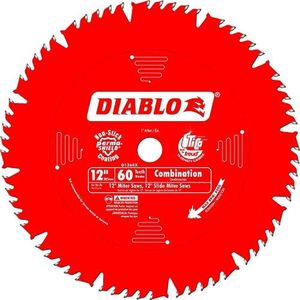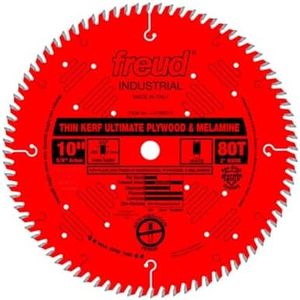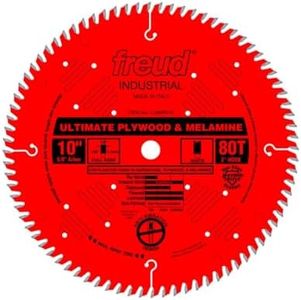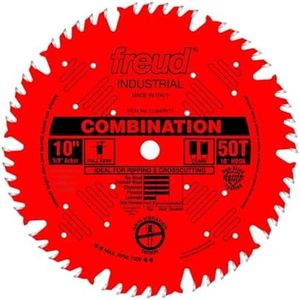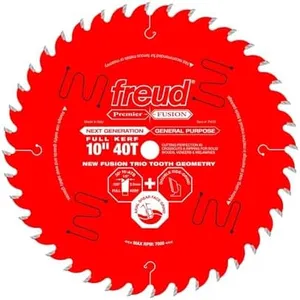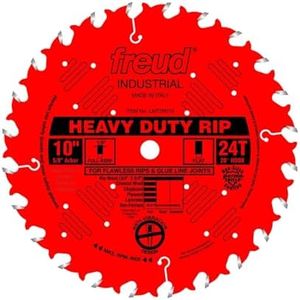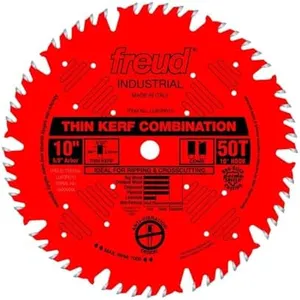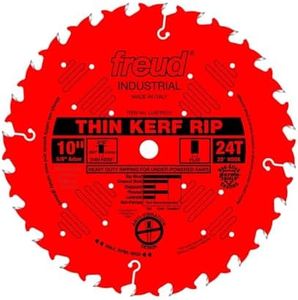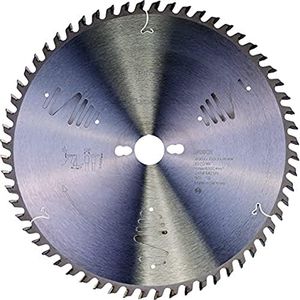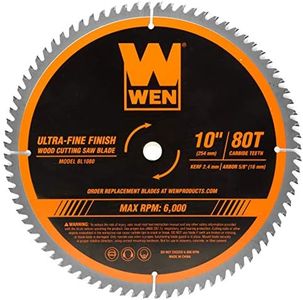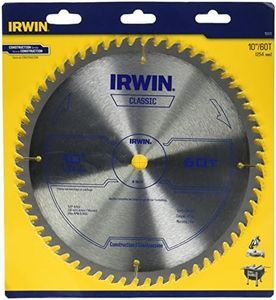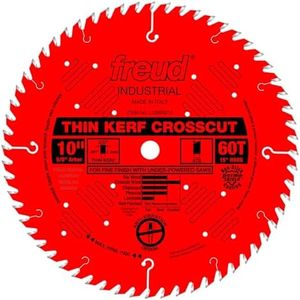We Use CookiesWe use cookies to enhance the security, performance,
functionality and for analytical and promotional activities. By continuing to browse this site you
are agreeing to our privacy policy
10 Best Table Saw Blades
From leading brands and best sellers available on the web.Buying Guide for the Best Table Saw Blades
Choosing the right table saw blade is key to getting clean, safe, and efficient cuts in your woodworking projects. The blade you pick should be matched to the kind of work you'll be doing most, such as ripping, crosscutting, or working with particular materials. Understanding the common specifications will help you make a smart decision and avoid frustrations like rough cuts, burn marks, or excessive wear on the blade and saw.Blade DiameterBlade diameter is the overall size of the blade, usually measured in inches. It matters because your table saw is designed to work with certain blade sizes; the most common is 10 inches, but there are also 8-inch and 12-inch blades. Using the right size ensures safety and performance—you never want to use a blade that's too large for your saw. If you mostly do standard cabinet or furniture work, the typical 10-inch blade will suit most needs. Check your saw’s manual for the maximum supported blade diameter.
Number of TeethThe number of teeth on a blade affects the smoothness and speed of your cut. Blades with fewer teeth (such as 24) cut faster and are good for ripping along the grain, but may leave rough edges. More teeth (like 40-80) make smoother cuts and are better for crosscutting across the grain or cutting plywood. If you need flexibility, a 40-tooth blade is often labeled 'combination' and does well for both ripping and crosscutting. Choose a blade with fewer teeth for quick, rough cuts in thick wood, and a fine-tooth blade for delicate or finish work.
Kerf WidthKerf refers to the thickness of the cut made by the blade. Full-kerf blades are about 1/8 inch thick and are more durable, suited for powerful saws. Thin-kerf blades, closer to 3/32 inch, remove less material and put less strain on the saw, making them ideal for less powerful saws or for maximizing usable wood. If you have a less powerful table saw or want to waste less material, opt for a thin-kerf blade. For heavy-duty saws and tougher materials, a full-kerf blade gives more stability.
Tooth ConfigurationTooth configuration describes the shape and arrangement of the teeth, affecting the type of cut you get. Common types are ATB (Alternate Top Bevel) for general purpose and crosscuts, FTG (Flat Top Grind) for ripping, and TCG (Triple Chip Grind) for cutting plastics or laminate. If you mostly cut hardwoods or do a mix of jobs, ATB is a solid choice. FTG is best if you mainly rip boards, while TCG is ideal for unusual materials. Match the tooth design to the primary work you'll be doing.
Material CompatibilitySome blades are specifically made for wood, plywood, laminate, non-ferrous metals, or plastics. Using the right blade for your material ensures cleaner cuts and longer blade life. If you work primarily with hardwood or softwood, a wood-specific blade works best. For cutting plastics or aluminum, get a blade made for those materials. Think about the materials you handle most often and pick a blade tailored to that use.
Coating and Tooth MaterialThe blade and teeth materials affect durability and performance. Most quality blades use carbide-tipped teeth for longer-lasting sharpness. Some blades also have special coatings to reduce friction, heat, and resin build-up. If you want less maintenance and longer intervals between sharpening, choose carbide-tipped blades. For heavy use or cutting tough materials, look for a blade with anti-stick coatings.
